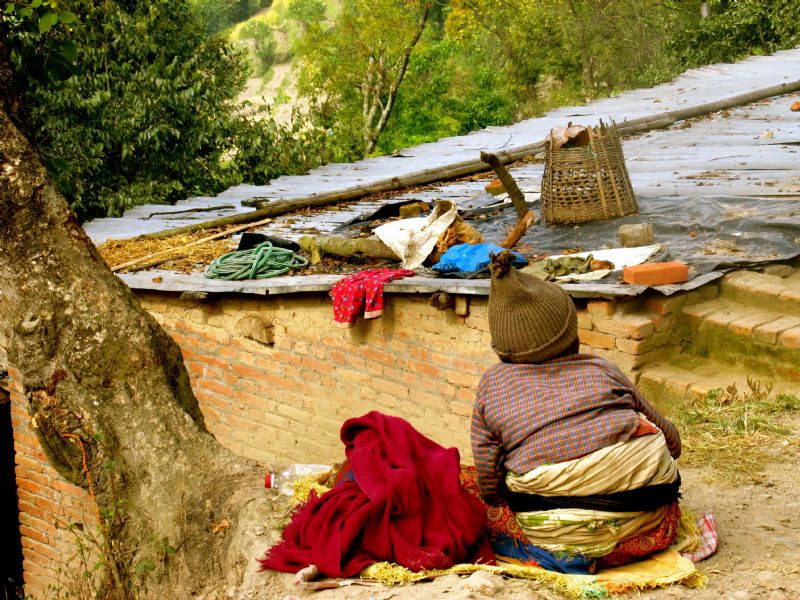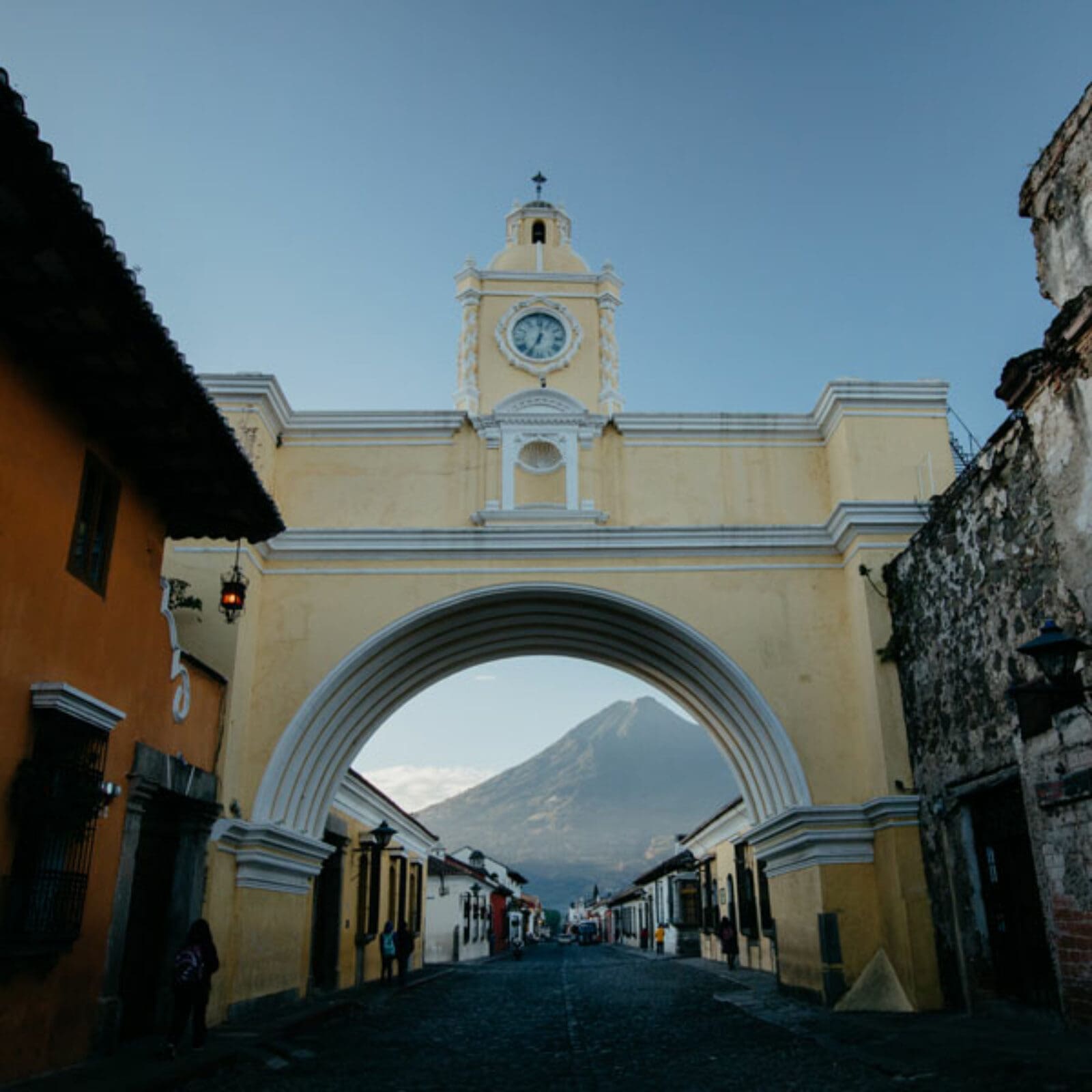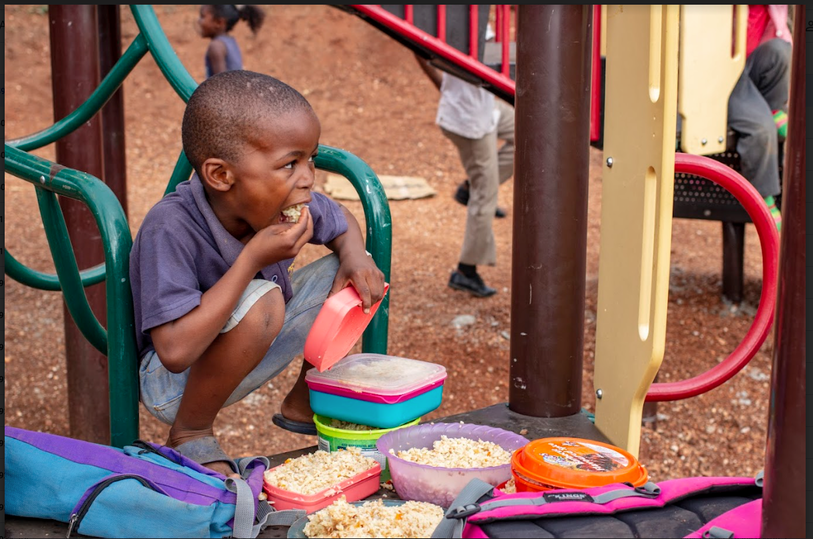A place hidden in the outskirts of the City Kathmandu lies a land filled with lepers. Once we finally made it to the Leprosy Colony I must admit I was a little surprised. We saw flowers everywhere and many elder people hanging out in the fresh Nepalese air. Once we got closer it hit me, this is not just something that you read or hear about; it is all very real. There are 200 lepers living in the area and 56 lepers in the specific colony we visited.
Kim and I sat in the middle of the grass with three ladies. We met Resu Maghi, a 24 year old woman and her 9 month old baby boy, Grace. Resu’s parents have lived at the colony for 15 years. Her father has had leprosy for 40 years and was diagnosed when he was in the war. He lost his leg but is one of the few that still has usable hands. He remained busy cutting grass, it brings him peace. Resu informed us that she was raised in a leper hostel. She is a Christian and translated for us.
Most of the people we met were Hindu and Resu revealed many of them hated Christians. We found favor in their eyes on this special day the Lord had blessed us with. Parbati Sharma, an elder woman who has lived in the colony for over 40 years, slowly walked over to where we were sitting. She was very fascinated with my hair and sat down so she could touch it. Parbati was Hindu and very bitter. The leprosy ate away her hands and left her with two small nubs. One of her nubs had a blister the size of an egg from trying to cook rice on her own. You could tell this upset her greatly but she was very proud she gets herself ready and cuts her own hair with a knife. Parbati has a son and a grandson but sadly they do not come visit her. Although there was a language barrier I felt a connection with her. She grew sweet and started to gently rub my knee with what was left of her hand.
More ladies gathered around us. An 88 year old Hindu lady who despised Christians allowed See Eun, our squad leader, to pray over her. See Eun prayed while massaging her head, she felt relief and visible peace entered her body.
A man named Shantye limped by us and Resu said he was a devoted Hindu man. Before we were leaving a woman asked for prayer. As Cicely was praying for her God told me I needed to pray for Shantye. He agreed to let us pray for him. I felt the Holy Spirit take over. While I was praying he turned his faced down hands upwards to receive the prayer. He released words filled with a mixture of pain and peace. I looked down and saw tears running down his cheeks. After the prayer he told Chandra our translator that he knows there is only one way to eternal life. Hallelujah!
When we were back in the city on our walk home we saw many homeless people with leprosy. My heart ached as I looked at their open wounds and dirty bandages. These people on the streets are not as fortunate as the people in the colony. The lepers in the colony are not terminal nor can they transmit their disease. They face many challenges but have a second chance and a new family in the colony. The homeless lepers appear to be in much worse condition and are alone.
These people have gone through so much pain and are surrounded by darkness, they need your prayers!
“Have I not commanded you? Be strong and courageous. Do not be terrified; do not be discouraged, for the LORD your God will be with you wherever you go.”
Joshua 1:9

Information on Leprosy…
Leprosy is a chronic disease caused by a slow multiplying bacillus, mycobacterium laprae. M. laprae multiplies slowly and the incubation period of the disease is about 5 years. Symptoms can take up to 20 years to appear. The disease mainly affects the skin, the peripheral nerves, mucosa of the upper respiratory tract and also the eyes. Leprosy is curable! Leprosy is not highly infectious but is transmitted via droplets from the nose or mouth or through frequent contacts with untreated cases.
Leprosy has rapidly decreased but is still reported in 115 countries. The official figures from 2012 reported the global prevalence of registered leprosy at 189,018. However, it was also reported to have 232,857 new cases reported in the same year. Global statistics show that 220,810 (95%) of the new cases of leprosy were reported from 16 countries, Nepal being one of them.
For more information please visited the World Health Organization








